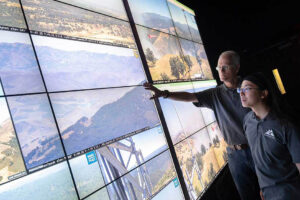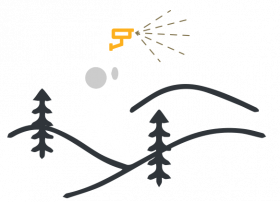
LIVE MAP
CAMERA FEEDS
ALERTCalifornia has more than 1,144 high-definition, pan-tilt-zoom cameras deployed across California (as of January 2025), providing a 24-hour backcountry network with near-infrared night vision to monitor disasters such as active wildfires. ALERTCalifornia cameras can perform 360-degree sweeps approximately every two minutes and can view as far as 60 miles on a clear day and 120 miles on a clear night. Explore our “camera quilt” to view live camera feeds and for more details on camera and network status.
LOCATIONS
INSTALLATIONS
ALERTCalifornia has an extensive, ever-expanding camera network in California. Researchers at UC San Diego have taken the lead in creating the cyberinfrastructure to process, store, manage and visualize the massive amounts of incoming data from these camera installations. Our discoveries help mitigate the impact of wildfires on people and property, and bolster research into how to best prepare and respond to wildfire threats, both before, during and after serious burn events.
ALERTCalifornia
TECHNOLOGY
As the ALERTCalifornia camera network and cyberinfrastructure grow in size and sophistication, UC San Diego researchers are using cutting-edge technology to gain insight into changing natural disaster patterns in the West. ALERTCalifornia provides state-of-the-art technology that supports data-driven decisions to prepare for, respond to, and recover from natural disasters.






